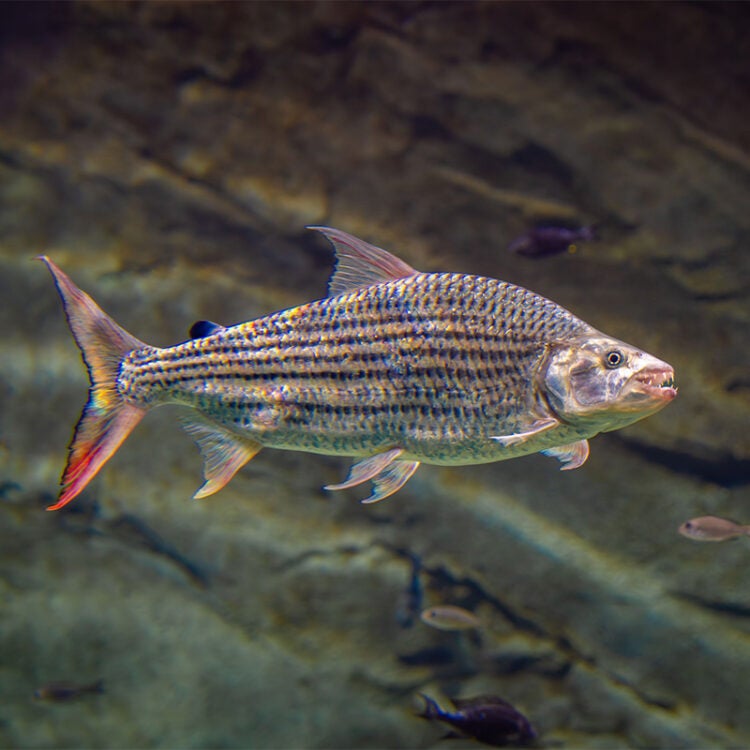-
Size
3.5 feet (1.1 m) -
Diet
Fishes and occasionally small birds -
Range
Sub-Saharan Africa -
Habitat
Large rivers and lakes
Physical Characteristics
- Coloration is silver overall with dark stripes running parallel down the body. Tail is red-tipped at the bottom edge with a black marking at the tip of the adipose dorsal fin and split of the caudal fin.
- Mouth has eight razor-sharp teeth per jaw used for tearing through prey. Teeth can be seen even when jaws are closed.
- Common length of 3.5 feet (1.1 m), with an upper weight of about 33 lbs. (15 kg).
Animal Fun Fact
African tigerfish have been known to leap out of the water to catch birds mid-flight.
Diet / Feeding
- Hunts in loose schools and feeds on whichever fish species are in abundance.
- Often will follow schools of migrating prey species long distances up and down rivers.
- May feed on small birds during summer months.
Range / Habitat
- Occurs in sub-Saharan Africa from Senegal to Ethiopia, and south to South Africa; Congo River Basin, lower Guinea, Lake Tanganyika and West Africa.
- Found in warm, well-oxygenated water, primarily in large rivers and lakes.
Reproduction & Growth
- An oviparous, or egg-laying species.
- Breeding begins with the onset of the rainy season, typically from November to March, when water levels in the rivers and lakes begin to rise.
- The male Tigerfish will build a nest on the riverbed or lake bottom, where the female will lay her eggs and the male will fertilize them.
- Females can lay 1,000-20,000 eggs, depending on size and age, and they will hatch within 2-3 days
Conservation Status
- “Least Concern” on the IUCN Red List.
Additional Information
- Forms schools of like-sized fish.
- Have been known to leap out of the water to eat barn swallows flying over the water. Can instinctively spot the fast-flying bird from the water, exceed the bird’s speed, compensate for refraction and leap out of the water while the bird is in flight.
- Important source of protein and income for local people.
- Top predator in its range and prized game fish for locals and ambitious anglers.
Sources
- www.fishbase.org
- www.iucnredlist.org
- https://safarisdemozambique.com
- https://www.totalfisherman.com







